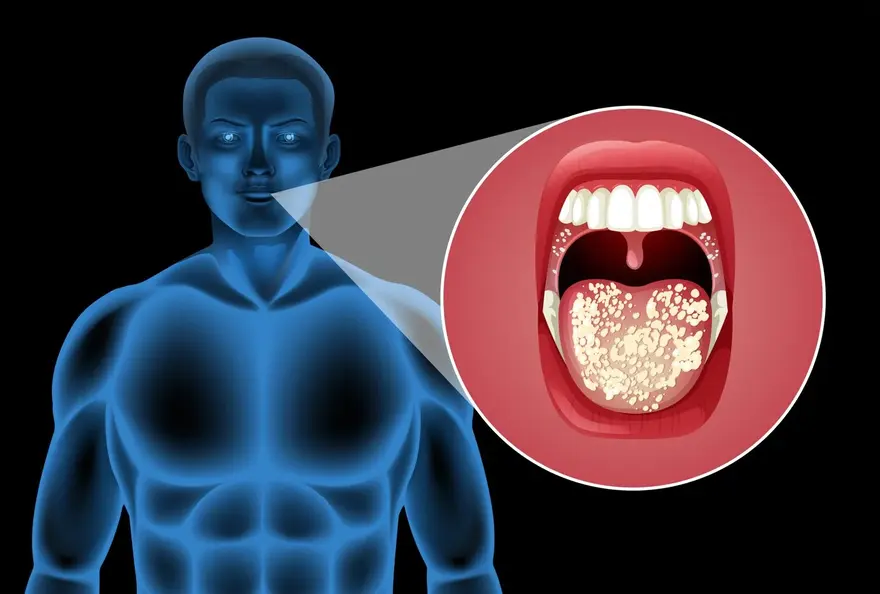Preventive Healthcare
Teratoma: Symptoms, Causes, Treatment & Types
791 Views
0

Have you heard of a teratoma tumor? If the answer no, you’re not alone! In the world of medical anomalies, teratomas stand out as unique but important. Comprised of different types of tissues, including bone, hair, muscle, and even teeth, these tumors are quite as intriguing as they sound.
So, what is a teratoma? What are its types and symptoms? How are they treated? These questions are likely on your mind. This guide aims to provide a clear answers and help simplify the complexities surrounding this condition.
What is a teratoma?
Teratomas are a rare type of tumor that can contain different types of tissues, including teeth, hair, muscle, and bone. Most teratomas are benign (non-cancerous) and can grow rapidly without spreading to other parts of the body. However, a small percentage can turn malignant (cancerous) spreading to other areas.
What are the types of teratomas?
Mature and immature teratomas comprise the two main classifications of this condition. Both require medical treatment such as surgery.
Mature teratomas
Mature teratomas start as benign but can become cancerous if not treated. They often form before birth or in newborns, but they can also be found in the ovaries or testes of adolescents and young adults.
These mature teratomas further divide into:
- Solid: Containing blood vessels within firm tissue.
- Cystic: Comprising one or multiple fluid-filled cysts enclosed within a thin outer rim.
- Mixed: Possessing both cystic and solid parts.
Immature teratomas
Immature teratomas amount to around 1% of all teratomas. These cancerous tumors are usually found in the ovaries of females or the testes of males, are primarily diagnosed in adolescents and young adults.
How common are teratomas?
Though all teratomas fall under the rare category, some types occur more frequently than others. Sacrococcygeal teratomas, which are found in the tailbone area, are diagnosed in about 1 in every 40,000 newborns. However, fetiform teratomas occur in only about 1 in 500,000 people.
What are the symptoms of a teratoma?
In the initial stages, teratomas may not have any symptoms. As it progresses, its common symptoms can include pain, bleeding, swelling, and slightly higher levels of the hormones BhCG (beta-human chorionic gonadotropin) or AFP (alpha-fetoprotein).
Ovarian teratoma symptoms
For ovarian teratomas, symptoms usually include an abdominal and pelvic pain due to an increased pressure on the ovary. Some cases might occur alongside NMDA encephalitis – a rare condition leading to severe headaches, confusion and psychosis.
Testicular teratoma symptoms
Primary symptoms for testicular teratomas include a lump in your testicle or swelling in one or both testicles. However, some individuals might not display any symptoms at all.
Sacrococcygeal teratoma symptoms
These can develop inside or outside your body in the tailbone (coccyx) area. Its symptoms may include tailbone pain, a noticeable mass in the tailbone area, abdominal pain, painful urination (dysuria), swelling in the pubic area, and weakness in your legs.
What causes teratoma?
Teratomas from germ cells, undifferentiated cells of the body that have the potential to develop into any type of cell, from eggs and sperms to hair cells. As a foetus develops, these germ cells move to different parts of the body and evolve into various cell types. This is why teratomas can contain a mix of tissues and body components, such as hair, teeth, fat, skin, muscle, and occasionally even parts of organs like the liver or lungs.
What are the complications of a teratoma?
Complications vary depending on where the teratoma is located. Common issues may include torsion (twisting of the body part, causing pain), rupture (the tumor bursting), infection, or cancerous transformation (when a tumor that starts as noncancerous becomes cancerous).
How to diagnose teratomas?
Teratomas can often look like cysts or may not be visible at all. They may be detected before birth during an ultrasound, at birth when visible, or during a routine physical or pelvic exam.
If you notice a lump on your body or experience pain or swelling, it’s important to consult a doctor immediately. If a teratoma is suspected, the doctor may perform imaging tests such as X-rays, ultrasounds, bone scans, MRIs, or CT scans to accurately locate the tumor in your body.
How to treat teratomas?
Treatment for teratomas depends on their location, size, and potential for becoming cancerous. A small, symptom-free tumor might not require treatment but should be monitored. In case, if the tumor has spread or is likely to turn cancerous, doctors may recommend surgery to remove it or suggest chemotherapy and radiation.
What’s the outlook for people with a teratoma?
If you or a loved one has been diagnosed with a teratoma, it’s natural to feel anxious. However, it's crucial to understand that vast majority of these tumors are noncancerous. Even when they are cancerous, early diagnosis and treatment lead to high survival rates. Overall, the outlook for people with a teratoma is generally good.
When to see a doctor?
Any time you find a new lump or bump on your skin or have ongoing abdominal pain, it's important to see your healthcare provider. They can perform the necessary tests and provide an accurate diagnosis. If you’ve already been diagnosed with a teratoma or had one removed, be sure to contact your doctor if you notice new symptoms or feel discomfort.
FAQ's
Can you have a teratoma on your face?
Yes. Although facial teratoma tumours are quite rare, accounting for less than 6% of all teratomas, they can indeed occur. If you notice any unusual growths on your face, it's important to seek medical consultation promptly.
Why do teratomas have teeth and hair?
Teratomas often contain teeth, hair and other tissues because they originate from germ cells. These cells have the potential to develop into any type of body tissue.
Can a teratoma have a heartbeat?
Although rare, some teratomas can produce a "heartbeat" of sorts. When these tumours also develop cardiac tissue, they could show heartbeat-like pumping activity.
What if my doctor finds a teratoma on the fetus during pregnancy?
The discovery of a teratoma during the fetal stage can be quite distressing. However, your healthcare provider will carefully monitor your pregnancy after such a diagnosis.
Small teratomas are usually not dangerous and won’t affect delivery. Larger ones may require an early delivery by C-section. In rare cases, fetal surgery might be required to remove the teratoma before it causes serious problems.
Treatment options for teratoma
Your healthcare provider will consider several factors - including your age, medical history, overall health and personal preferences - before planning your treatment for teratoma. The first line of treatment is often surgical removal of the tumour. In case the teratoma is cancerous and has spread to other parts of the body, chemotherapy or radiation therapy might be required post-surgery.
Your healthcare provider will consider several factors - including your age, medical history, overall health, and personal preferences - before planning a treatment for teratoma. The first step is usually to surgically remove the tumor.
If the teratoma is cancerous and has spread to other parts of the body, you may need chemotherapy or radiation therapy after surgery.
Conclusion
Getting diagnosed with a teratoma can be concerning, but remember that knowledge is power! Understanding the condition, its types and symptoms, is your first step towards managing it effectively. While this guide gives you important information, always talk to your healthcare provider for personalized advice and treatment plans.
Considering your health as a priority, Metropolis Healthcare is there to assist you with accurate diagnostic testing and health check-up services. Their team of qualified technicians can even collect blood samples at your home, processed in their advanced labs. Don't let distance or discomfort be an obstacle – take control of your health, starting today!























 WhatsApp
WhatsApp